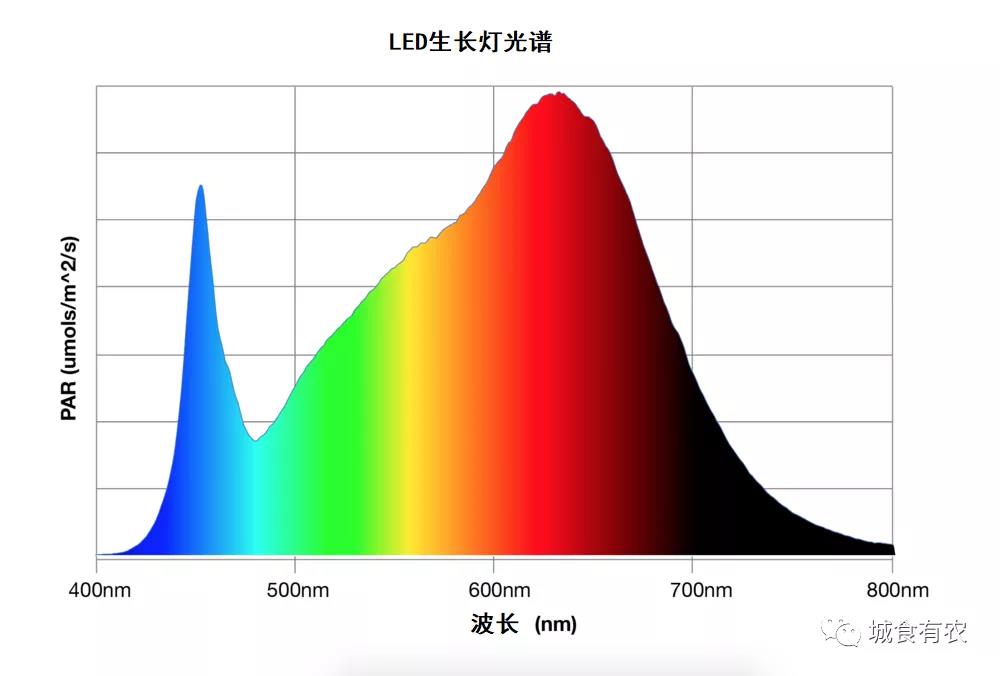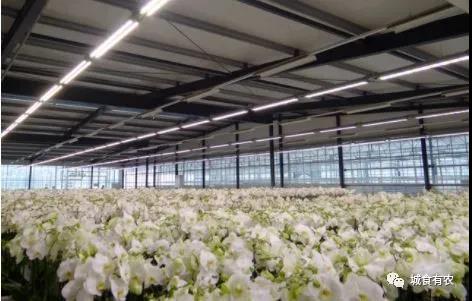Red/blue LED growth lamps are often called as narrow-band spectroscopy because they emit wavelengths within a small narrow-band range.
LED grow lights that can emit “white” light are usually called “broad spectrum” or “full spectrum” because they contain the entire wide-band spectrum, which is more similar to the sun showing “white” light, but in fact there is no real White light wavelength.
It should be pointed out that basically all “white” LEDs are blue light because they are coated with a layer of phosphor that converts blue light into longer wavelengths. Phosphors absorb blue light and re-emit some or most of the photons into green and red light. However, this coating reduces the efficiency of photon conversion into photosynthetic effective radiation (PAR) usable light, but in the case of a single light source, it helps to provide a better working environment and determine the spectral quality.
In short, to know the efficacy of the lamp, you need to divide its photosynthetic photon flux (PPF) by the input wattage, and the energy efficiency value obtained is expressed as “μmol/J”. The larger the value, the lamp will convert electrical energy into PAR photons, the higher the efficiency will be.
Many people often associate the “purple/pink” LED grow lights with garden lighting. They use different combinations of red and blue LEDs, and they are especially recommended for greenhouse growers who can get sunlight. Since photosynthesis peaks at the red and blue wavelengths, this combination of spectra is not only the most effective for plant growth, but also the most energy-efficient.
From this perspective, if the grower can use sunlight, it makes sense to invest most of the energy in the wavelength that is most conducive to photosynthesis, so as to maximize energy savings. Red/blue LED lights are more energy efficient than “white” or full-spectrum LEDs, because red/blue LED have the highest photon efficiency compared with other colors; that is, they can convert the most electrical energy into photons, so the cost For every dollar, plants can grow more.
2.Broad-spectrum “white light” LED growth light
In a greenhouse, the outdoor sunlight will offset the “pink or purple” light emitted by the red/blue LED lights. When the red/blue LED is used as a single light source indoors, the spectrum it provides to plants is very limited. In addition, working in this light can be very uncomfortable. As a result, many indoor growers have switched from narrow-spectrum LEDs to “white” full-spectrum LED grow lights.
Due to the energy and optical loss in the conversion process, the energy efficiency of broad-spectrum LEDs is lower than that of red/blue LEDs. However, if used as the only light source in indoor agriculture, broad-spectrum LED growth lights are much better than red/blue LED lights because they can emit a variety of wavelengths at different growth stages of crops.
LED growth lights should provide the light quality most suitable for plant growth and yield, while still allowing flexibility in crop types and growth cycles, and creating a comfortable working environment.
Post time: Mar-22-2021






